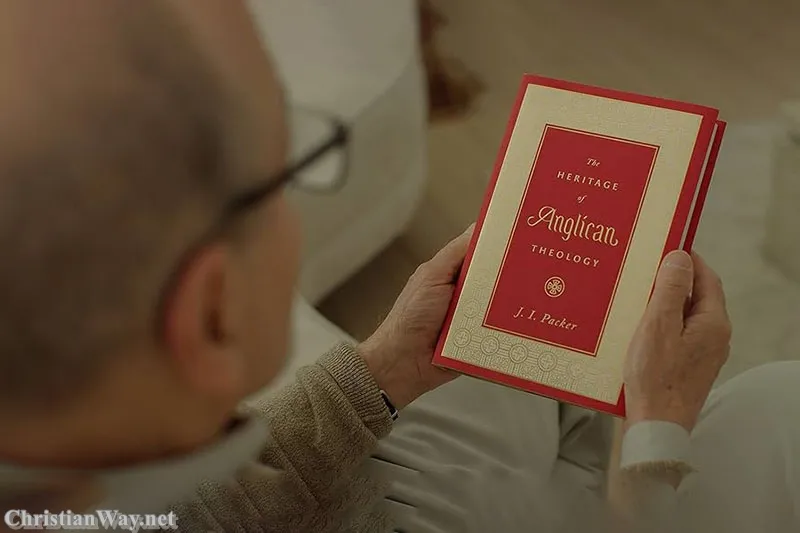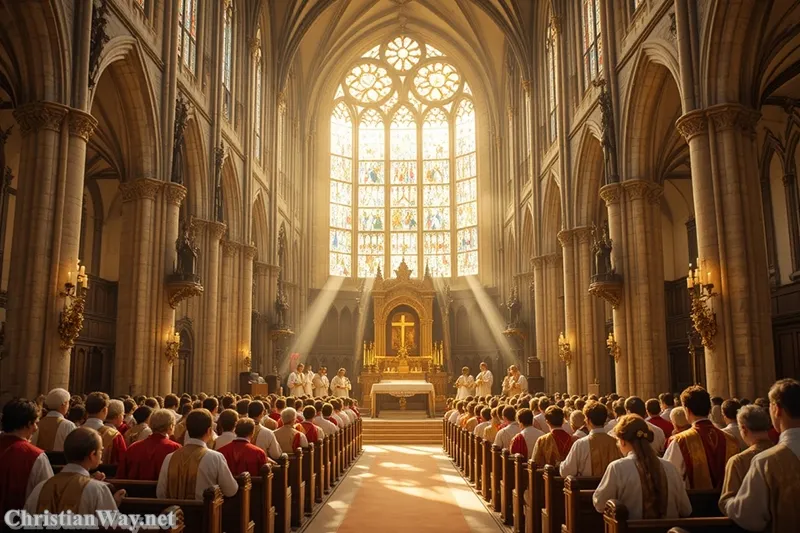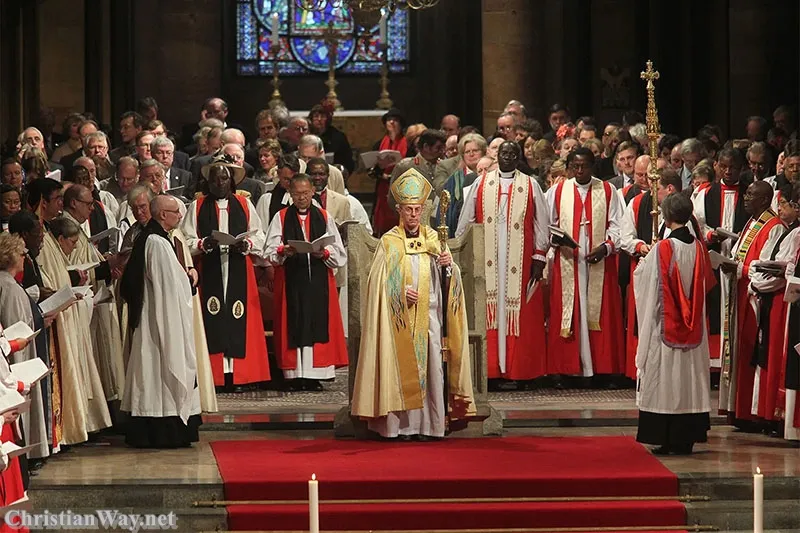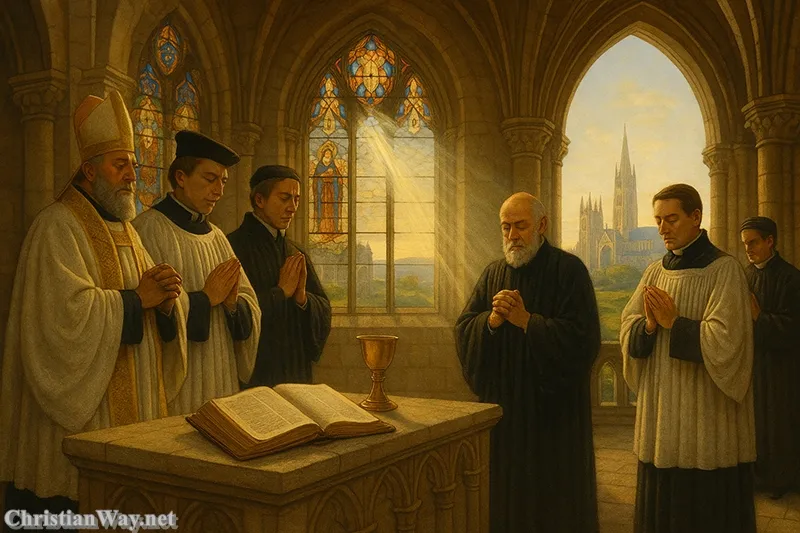Dear friends in Christ,
Among the great figures who guide the Christian world today, few hold a position as deeply symbolic and historically rich as the Archbishop of Canterbury. For centuries, this office has stood as a bridge — between past and present, between Church and nation, and between Christians throughout the world. To speak of the Archbishop of Canterbury is to speak of spiritual leadership, unity, and the enduring witness of faith within the Anglican Communion.
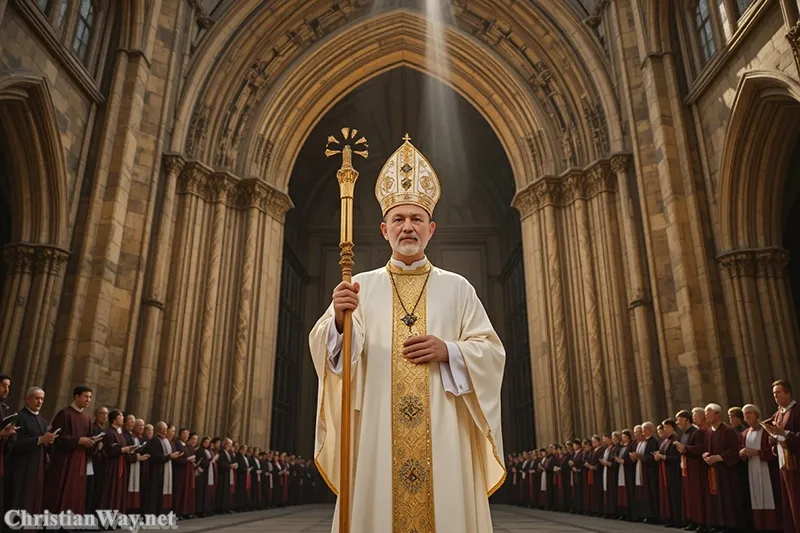
The title is not one of political power or worldly authority, but of pastoral care and moral presence. It embodies what the Church has always sought to uphold — that spiritual authority flows not from domination, but from service; not from status, but from holiness of life.
The Historical Roots of the Archbishopric
The story of the Archbishop of Canterbury begins in the 6th century, when St. Augustine of Canterbury was sent by Pope Gregory the Great to evangelize the English people. Arriving in Kent in 597 AD, Augustine established his mission in the city of Canterbury, which became the cradle of English Christianity.
From this humble beginning, the seat of Canterbury — known as the See of Canterbury — became the heart of the English Church. Augustine, the first Archbishop, set the pattern for centuries to come: a shepherd who teaches, sanctifies, and unites the flock under the lordship of Christ.
As Christianity spread through the British Isles, the Archbishop of Canterbury emerged as the Primate of All England, guiding the clergy, consecrating bishops, and representing the faith before kings and councils. Through reformations, wars, and renewals, Canterbury remained the symbol of an enduring Christian presence amid changing times.
The Archbishop’s Role in the Anglican Communion
Today, the Archbishop of Canterbury holds a role that extends far beyond England. He serves as the spiritual head of the worldwide Anglican Communion, a fellowship of more than 85 million Christians across 165 countries.
This Communion, though diverse in language, culture, and practice, is bound together by a shared faith in Christ, a common heritage of Scripture, and the sacraments as instituted by the Lord. The Archbishop of Canterbury, therefore, acts as a sign of unity, not through juridical authority as in the papal model, but through moral and spiritual leadership.
He is often described as “primus inter pares” — first among equals — among the bishops of the Anglican world. This means that while he does not command other provinces, his office carries the weight of history and the call to communion. He gathers the bishops together in prayer and dialogue, especially through events like the Lambeth Conference, held roughly every ten years.
In this sense, the Archbishop’s ministry is deeply relational. He listens, mediates, and seeks reconciliation among the diverse voices of the Anglican family, always striving to hold unity without uniformity and faith without fear.
The Archbishop and the Church of England
Within England itself, the Archbishop of Canterbury holds a unique place as the senior bishop and principal leader of the Church of England. Alongside the Archbishop of York, he serves as one of the Church’s two metropolitans, overseeing the southern province.
He is also the Diocesan Bishop of Canterbury, responsible for the spiritual life of his own diocese. From his cathedral — the majestic Canterbury Cathedral, a UNESCO World Heritage site — he leads worship, ordains clergy, and serves as a visible reminder of the Church’s continuity through the centuries.
The Archbishop also plays a key role in the life of the British nation. As the Primate of All England, he crowns the monarch in Westminster Abbey, presides over national services, and often serves as a moral voice in public discourse. Though the Church and State are distinct, their historical bond remains evident, reminding society that moral vision cannot be separated from spiritual truth.
The Spiritual Heart of His Ministry
Yet beyond the ceremonies and responsibilities, the Archbishop’s deepest vocation remains pastoral and spiritual. His calling is to bear witness to Jesus Christ in an age that often forgets God, to speak truth with love, and to shepherd both believers and seekers toward the hope of the Gospel.
Archbishop Justin Welby, who has served since 2013, often emphasizes reconciliation, prayer, and peacebuilding. His work extends into regions torn by conflict, addressing issues such as poverty, environmental stewardship, and interfaith dialogue. His ministry reflects the conviction that the Church’s mission is not to withdraw from the world but to bring Christ into its very heart.
In his words:
“The call of the Church is the call of Jesus — to love without limit, to forgive without ceasing, and to serve without reward.”
This spirit of humble service reflects Christ Himself, the “Good Shepherd,” who came “not to be served, but to serve, and to give His life as a ransom for many” (Matthew 20:28).
The Archbishop as a Bridge of Unity
In a world marked by division — between nations, ideologies, and even Christians themselves — the Archbishop’s ministry has become a symbolic bridge. His role reminds us that unity does not mean uniformity, but communion grounded in love and truth.
Throughout history, the Archbishop of Canterbury has worked to maintain dialogue among Christians of different traditions. From Catholic and Orthodox relations to conversations with Protestant and Evangelical communities, his office represents a genuine desire for Christian unity, echoing the prayer of Christ in John 17:
“That they may all be one; as You, Father, are in Me and I in You.”
This ecumenical vision is not merely administrative — it is profoundly spiritual. It invites all who follow Christ to look beyond their differences and to recognize one another as members of the same Body.
Canterbury Cathedral: A Living Symbol of Faith
No reflection on the Archbishop of Canterbury would be complete without mention of Canterbury Cathedral, the mother church of the Anglican Communion.
It is a place where prayer has never ceased for over 1,400 years — where kings have knelt, martyrs have bled, and pilgrims still come seeking peace. The Cathedral’s history bears witness to saints such as Thomas Becket, whose martyrdom in 1170 remains one of the most powerful symbols of conscience and faithfulness against worldly pressure.
Every stone of Canterbury speaks of faith tested and renewed. It is not just a monument, but a living sanctuary — a place where the Church’s memory breathes and the Archbishop’s voice continues to echo the timeless Gospel.
The Archbishop in a Changing World
The role of the Archbishop of Canterbury today is not without challenges. The modern world often wrestles with questions of truth, morality, and faith in an age of secularism. Within the Anglican Communion itself, tensions over doctrine and ethics have occasionally strained unity.
Yet, through prayer and discernment, the Archbishop seeks to hold the Church together, trusting in the Holy Spirit’s power to guide and renew. His task is not to command agreement, but to keep the family of faith gathered around Christ, whose cross alone is the source of unity.
This is a sacred burden — one that calls for both courage and humility. It is a reminder that leadership in the Church must always be cruciform, shaped by the love that lays down its life for others.
Lessons from the Archbishop’s Witness
In reflecting on this sacred office, we find not merely a historical curiosity or an institutional leader, but a living sign of what Christian leadership is meant to be. The Archbishop of Canterbury stands as a reminder that:
- True authority flows from service.
- Unity must be built upon truth and love.
- Faith must engage with the world, not retreat from it.
- The Church is at her best when she listens, reconciles, and forgives.
In this way, the Archbishop’s ministry mirrors the call of every Christian. For though few may wear the mitre or stand before nations, all of us are called to the same mission — to be ambassadors of Christ, ministers of reconciliation, and bearers of light in a world longing for peace.
Reflect and Pray
Dear brothers and sisters, as we contemplate the sacred office of the Archbishop of Canterbury, let us remember that every role of leadership in the Church — from bishop to priest to lay disciple — finds its source and meaning in the servant heart of Christ.
Let us pray for all who bear the weight of spiritual leadership, that they may be guided by wisdom, protected by grace, and sustained by prayer.
Lord Jesus Christ, Shepherd and Bishop of our souls, bless those whom You have called to guide Your Church.
Grant them humility in authority, courage in truth, and gentleness in service.
May they lead Your people toward unity in love and faith, until all are gathered in Your Kingdom of peace.
Amen.
— Fr. John Matthew, for Christian Way

